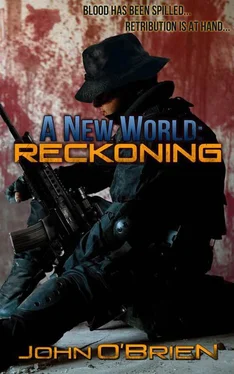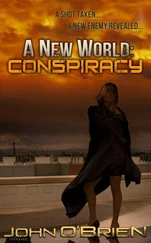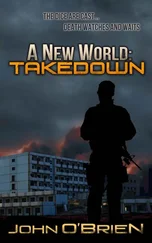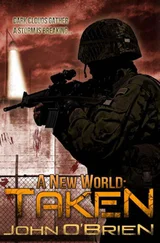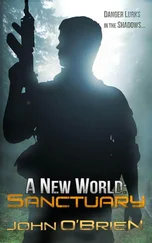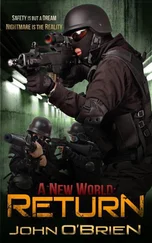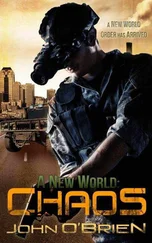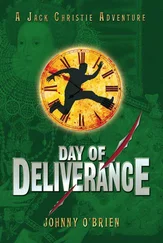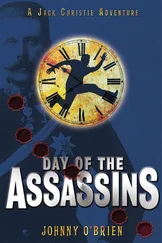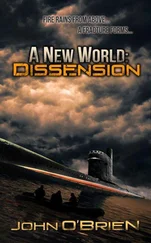The best situation would be if we have a cloud cover, with the ideal being if it’s raining. We talk about creeping slowly to the aircraft under opaque shower doors to defeat IR, but, seeing it will be hard to disguise the 130 starting or taking off anyway, we discard that idea. We will just hastily make our way to the aircraft and hope that any interest the other group may have taken in us will be lost after a day thinking it was just a run.
Our whole plan relies on us getting to the bunker facility undetected. With that in mind, we’ll stay low and use the mountainous terrain to conceal us. I’m hoping the guard 130 will have FLIR capability and I am reasonably sure that they do. Providing we get off undetected, the terrain will keep us hidden until we break out onto the Colorado Plains. At that point, we’ll drop down to a hundred feet and proceed in.
Much discussion is had regarding inserting the teams. Initially, we talk about doing a HALO drop like Greg and I did into the prison at Lubbock. However, given that the experience level of the teams with that, or any time under silk is zero, that idea is quickly thrown to the side of the road.
I’ll go in via a LALO (Low Altitude-Low Open) drop. That will require us popping up for a quick drop allowing radar, if they have it, a better chance at painting us; but it will only be for a moment and it may be taken for a ghost blip. Robert will then proceed north to Greeley and circle until called for. Once I have taken out the security room, he’ll bring the aircraft in and land in a nearby field. The teams will disembark and make their way to me.
“Jack, that will leave you exposed for a long time,” Lynn states.
“That can’t be helped. I can’t see any other way that this will work,” I reply.
“Will they discover our communications?” Robert asks.
“We’ll use distinct clicks to communicate,” I answer.
We then set the communication system up. Two clicks will signal a message to follow. A corresponding two clicks will signal that the one receiving has understood and is ready to receive. We cover the signals for when the teams arrive at various checkpoints. If something goes wrong and I have to exfil before the teams set foot on the ground, we cover different scenarios. Some involve landing and picking me up, others to fly and land at either Greeley or Denver International, and I’ll make my way to them. If it goes very wrong, Robert and the teams are to abort and fly back to Cabela’s.
“Under no circumstances are you to enact a rescue if I’m found and taken,” I state, finishing.
I’ll be flying the en route portion and hand it over to Robert when it’s time for me to get ready for the drop. There is a lot that Robert and Craig will require regarding flying low level, and the drop itself, so we’ll spend the next several days training. This training will be conducted during the day to start off with to get them accustomed to low-level flying and then transition to night. I’m sure the other group is monitoring us so we’ll make these flights look like normal ones so we don’t give them a clue that something is up.
In total, the flight will take three hours. With us leaving near sunset, once we arrive near the underground bunker, we’ll have nine hours of darkness remaining with which to work. Dropping me approximately three miles from the facility should give us enough time to get inside and enact our plan.
“Jack, even though I understand our need to do something, I still have reservations about this plan. However, throughout this discussion, I haven’t heard one mention of night runners. This whole thing is going to be conducted at night, with long periods being spent outside during darkness. How do we do this and take them into account?” Frank asks.
“Believe me, I’ve thought about them. My thinking is that they won’t be a factor seeing the bunker is so far away from any build-up. The facility is almost twenty miles out from the outskirts of Denver, and that’s the closest town. I know that’s a risk but it’s one we’ll have to take if we’re to do this. There’s no way we can do anything against them during the day. We’ll just have to take the risk that there is the odd one or two out there. I’ll open up just prior to the drop. If there’s any around, we’ll abort and come up with some other game plan. I just don’t see any way around it,” I answer.
“I will admit the odds of any out that far, at least in any numbers, are remote given that there isn’t much cover for them during the day. However, we are seeing these branching out from Seattle, so it could be the same there,” Frank says.
“True, but it’s different there than here. Here, they appear to be following a path of urban areas. If they are branching out from Denver, they would most likely be heading north and south where there are places for them to take refuge during the day,” I respond.
”I guess I’m just not liking the fact that we’re going to put our most experienced teams into basically a do-or-die situation. If we roll the dice and lose, we’ll lose the entire compound,” Frank states.
“I agree it’s risky, but if we don’t roll the dice at all, we’ll also lose. Honestly, this plan carries a lot of risk and needs fine-tuning, and I’ll entertain another if anyone has one,” I counter.
No one responds.
“Okay…so, for now, let’s run with this one and continue our discussions. Lynn, bring the teams in training up to speed and start training with the teams going in. I’ll work with Robert and Craig. Bannerman, we’ll need a dry suit, the switches, small video capture systems with playback and loop capabilities, several thin magnets, a small spray bottle, and a roll of magnesium strips.”
With the plates of food that were brought now long empty, and the day heading into late afternoon, the meeting breaks up. I show Bannerman where I know several large electronic warehouses are located and meet with Frank to begin planning for tonight’s flight. It’s been a few days since we’ve been north during the night and we are both anxious to see what our neighbors have been up to. If Frank’s estimation of what the night runners are doing is correct, we should see increased numbers emerging at night in the areas just north of us.
The mostly clear day should continue into the night so we’ll have a good chance to cover a lot of area. This is going to be mostly a recon of the urban areas up to Seattle but, if the weather holds, we’ll have time to deal some damage to those that we find. If the numbers coming out of Seattle are correct, there’s no way we’ll be able to take them all out, but any we can whittle down will be fewer that can come into our area.
The compound is covered in shadow from the lowering sun as we pull up the gear and fly over the outer wall. Even though our original Spooky checked out okay after we rode out the propane farm explosion, we take the one we recently obtained from Cannon AFB. Banking to the north, with the huge propellers taking large bites out of the air and the engines droning at full power, the Spooky claws for altitude.
We are soon traversing the Nisqually Valley through which flows the narrow but deep Nisqually River. There is still time before the sun fully sets behind the mountains and plunges the landscape below into darkness. The time of the night runners is drawing nigh but we have a few moments of twilight left.
“Robert, I’m going to make a run along the river. Have the low-light video running. I want to capture the bridges as we pass over,” I call.
“Copy. Give me a sec,” he replies.
Once he gives me the call that he’s ready, I descend and turn the aircraft south, offsetting the Nisqually River. Flying down the river, I note four bridges spanning its narrow width. Two are the side-by-side interstate bridges, each with three lanes of freeway crossing with a metallic superstructure arching over them. Another is a two-lane bridge of the Old Pacific Highway a little over a mile to the south. Approximately a half mile south of that one, a twin-track, wooden railway trestle bridge crosses. Other than those four bridges, there isn’t another one for about twenty miles.
Читать дальше
